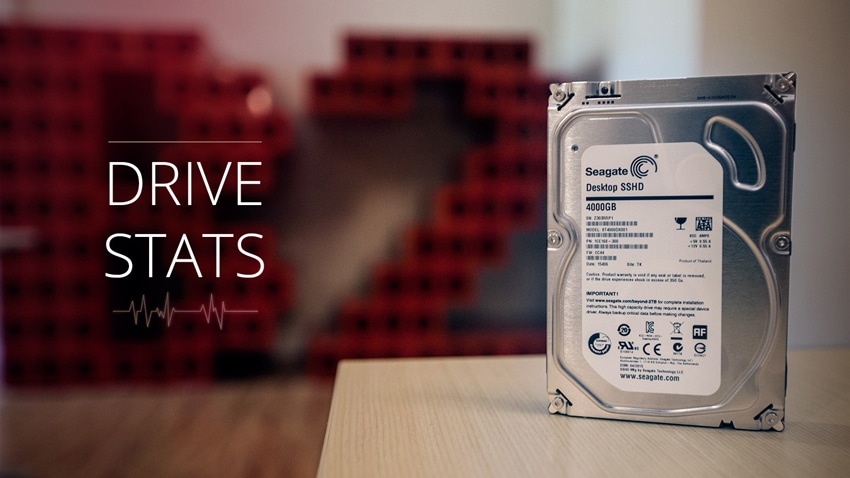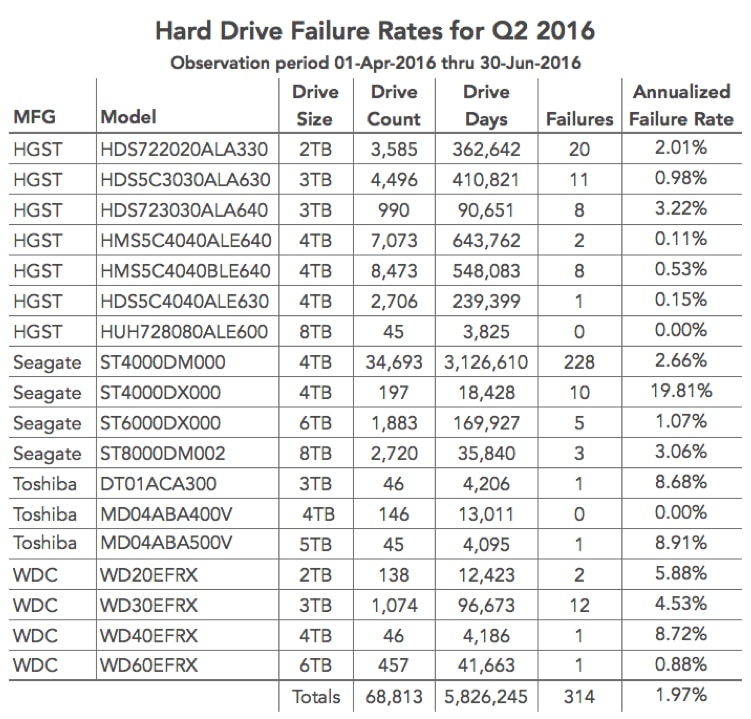Backblaze has released its latest HDD reliability results, this time the results are for the second quarter of 2016. This go round, Backblaze has added some 8TB Seagate drives to the mix while retiring some smaller capacity, 2TB, HGST drives. This quarter Backblaze looked at nearly 70,000 hard drives for almost 6 million drive days or roughly 16,000 years.

The setup/testing environment is still the same as we mentioned last time: Since 2007 Backblaze has been offering an online backup service. For the backup service Backblaze uses storage pods that holds at least 45 HDDs (the newer pods hold 60 HDDs). They put 20 storage pods together to make a storage vault that can hold up to 1,200 HDDs. Backblaze uses hard drives from primarily four main vendors: Seagate, WD, HGST, and Toshiba. The reason for choosing these companies comes from being able to buy the quantity needed for the price that enables Backblaze to offer customers the best deal. Backblaze also states that the reason most of the drives they use are Seagate and HGST is due to the availability of purchasing the quantity needed at the right price.

An interesting thing to note this time is that the overall annualized failure rate is higher than last quarter but still only 1.97%. Some of the drives had a much higher annualized failure rate this quarter (annualized failure rate is computed by ((Failures)/(Drive Days/365)) * 100). For instance the Seagate ST4000DX000 4TB drive had the highest annualized failure rate at 19.81%, but only 10 drives total failed. The Seagate ST4000DM000 4TB had the overall highest amount of drives fail, at 228, but its annualized failure rate was only 2.66%. There were two drive types that saw no drive failures and therefor resulted in a 0.00% annualized failure rate: the HGST HUH728080ALE600 8TB and the Toshiba MD04ABA400V 4TB. Failure in this study is defined as 1) The drive will not spin up or connect to the OS. 2) The drive will not sync, or stay synced, in a RAID Array. 3) The Smart Stats used show values above Backblaze’s thresholds.
With the last results published we noted that the drives were on the smaller side of density considering what is now available (8TB HDDs are quickly replacing the common 6TB HDDs and at the time of the writing Seagate is delivering 10TB HDDs). As stated above, Backblaze has introduced 8TB drives into the mix both with Seagate and HGST. 8TB drives make up 4.1% off all drives being used by Backblaze with 6TB drives making up 3.4%. The majority, 77.5%, of drives being used are still 4TB. As far as vendor breakdown goes the vast majority of drives are from Seagate at 57.4%, HGST makes up 39.7%, WD makes up 2.6%, and Toshiba makes up the other 0.4% (rounding up makes the total 100.1% for those of you that noticed).
The entire study is available at Backblaze’s site for more insights on which drives performed well as well as the amount of time the drives ran in their data centers.




 Amazon
Amazon